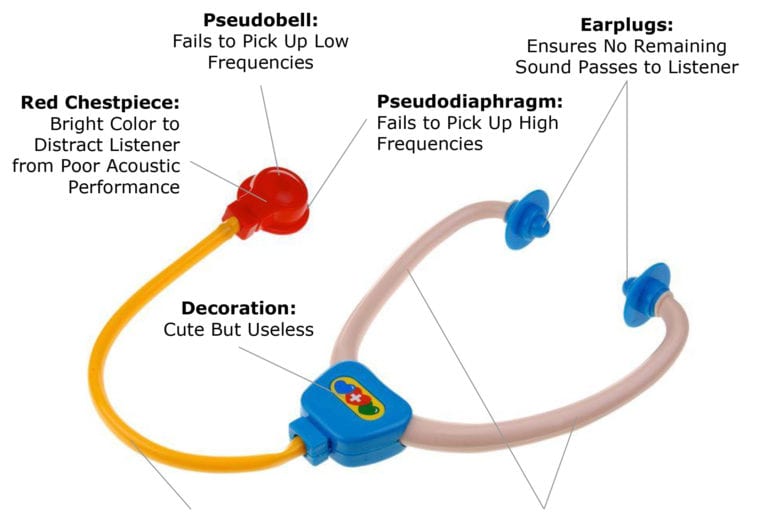
1. The Disposable Stethoscope
This stethoscope can be found in contact precaution rooms, the ICU, or the pre-op area of an ophthalmology clinic. It’s made of lightweight aluminum designed to pick up as much ambient noise as possible. As a result, you can easily carry on a conversation with somebody while listening to any number of human body noises. The disposable has the added feature of earpieces made of concrete that will result in permanent soft tissue damage if worn too long. Nobody will fault you for listening to a patient through clothing; it doesn’t make a difference.
2. The Standard-Issue Stethoscope
Remember in the first 2 weeks of medical school, when Littmann sales reps descended on a room full of unsuspecting med students? Everybody bought the same $200 stethoscope that would soon sit in a drawer collecting dust for two years while you learned biochemistry and stats. This stethoscope has comfortable ear pieces and molds perfectly to the average neck. The only downside is that it’s incapable of hearing anything less than a grade III heart murmur.
3. The Amplifier Stethoscope
Used mostly by cardiology fellows who are actually trying to hear S3 and S4, this stethoscope has volume control to really make those heart sounds thud. The amplifier stethoscope is perfect for people who take the cardiac exam way too seriously or for those who have an affinity for sick beats.
4. The Double-Barrel Stethoscope
Oh good! You found that stethoscope that has been sitting in the bottom shelf of a dusty cabinet in an abandoned equipment room of a dilapidated county hospital. With this relic, you can listen to the ghosts of patients who died from fatal arrhythmias that weren’t picked up with this stethoscope.
5. The Quintuple Stethoscope
In the 1960s, this stethoscope was used by old white men to let other old white men listen to heart sounds while the patient was actively dying. Now it’s used as an object of ridicule by medical satire writers.
6. The Megaphone Stethoscope
The megaphone can still be found in some dermatology clinics. This is intended to be used by physicians who have forgotten what the heart sounds like. Does it beep? Does it sound like a pager? Does it talk to you? If so, what language does it use? Use your megaphone stethoscope to find out!